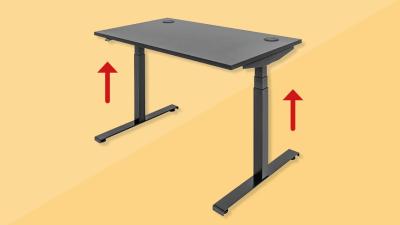
Are laptops bad for us? Are they damaging a generation of workers? What can we do to protect ourselves from the risks of long-term laptop use? In this guide, our Lead Consultant (ergonomist, physiotherapist and health and safety consultant) Katharine Metters busts some myths and offers some tips.
Pre-’80s, there was a problem. We really liked computers, but we also liked moving around. In 1981 a solution was invented: a folding computer that ran on a battery pack. This, widely considered to be the first true commercial laptop, had a five-inch screen and weighed 10.7 kg, about the same as a one-year-old child. With a price tag of £1,395 (£3,344 in today’s value) the Osborne 1 was aimed mainly at a niche market of accountants and military personnel. Four decades and thousands of models later, we now have affordable laptops that weigh as little as 1.8lbs with as much processing power as a desktop computer. Despite massive advancements in laptop technology, there hasn’t been much change to the general appearance of the laptop - in particular, to laptop ergonomics.
Just like that first Osborne 1, today’s laptops are designed with the screen and keyboard connected by a hinge, and with a mouse trackpad located beneath the keyboard. We asked our resident physiotherapist and ergonomist Katharine Metters what can happen to the human body when a laptop is used on its own for a long period of time.
She says: “A well set up laptop, used with a good working posture and regular breaks, will do no harm. My main device is a laptop and trust me, if I was concerned I wouldn't use it. Using a laptop for hours on end in a poor, static position however, can cause or aggravate many musculoskeletal issues such as neck pain, with or without referred pain in the arm and hand, localised wrist problems - especially if using a trackpad on a laptop with a thick base. I - and my therapeutic colleagues, have also seen a rise in upper back pain, headaches, eye strain, lower back problems and even leg problems that seem to be related to poor, prolonged laptop use.”
The take-home message? "Enjoy the freedom these devices provide but think about how you use them and take sensible precautions. There's no need to throw it in the skip to save your neck (and back, and shoulders, and limbs) just yet as there are flexible solutions available. Why not browse our collection of ergonomic mice, keyboards and laptop stands, or opt for a laptop pack which includes all three? If nothing else, keep moving and stretching while you use your laptop. Your body is amazing at coping if you keep it moving."
To help illustrate what healthy laptop use looks like, we've created an infographic offering advice about the kind of positions you should adopt, and the type tasks you can carry out, in various work environments.












